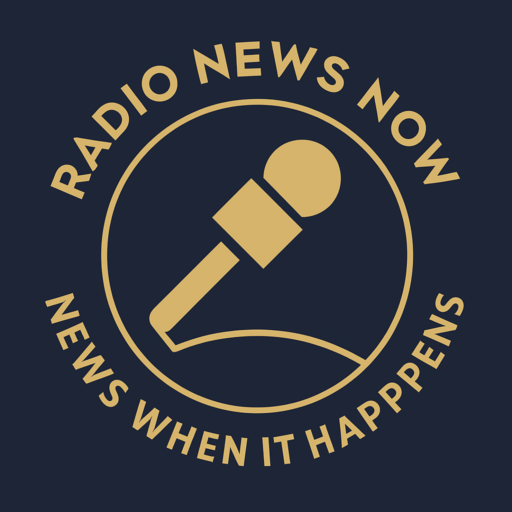🎼 Music Licensing 101: What Every Streamer & Podcaster Should Know
Published: July 5, 2025
By: Lee Michaels– Radio News Now
If you’re a podcaster, YouTuber, radio host, or live streamer, using music in your content is a game-changer — but using it legally can be confusing and risky. Just because a song is available online doesn’t mean you have the right to use it.
Whether you’re dropping a hit track during your livestream, using a theme song in your podcast, or uploading archived radio shows, here’s everything you need to know about music licensing, broken down in simple terms.
⚠️ First: What Happens If You Use Music Without a License?
In short: You risk takedowns, demonetization, copyright strikes, or even legal action.
Major platforms like YouTube, Twitch, Spotify, and Apple Podcasts all use automated detection tools (like Content ID) that flag unlicensed use. One song can get your content pulled, your stream muted, or your channel shut down.
Even using 10 seconds of a copyrighted song without permission can be a violation.
🎧 1. What Is Music Licensing?
Music licensing is the legal process of gaining permission to use music in your content. This typically involves paying a fee or getting specific rights from the owners of the music.
When you use a song, you’re using two separate copyrights:
Composition (the song itself) – owned by the songwriter or music publisher
Sound Recording (the recorded performance) – owned by the label or artist
You need permission for both if you’re using commercial music.
📑 2. Types of Licenses Streamers & Podcasters Might Need
License Type Needed For Provided By
Sync License Using music in videos or podcasts Music publishers, rights holders
Master License For the specific recording Record label or artist
Mechanical License Reproducing songs (e.g., covers, downloads) Harry Fox Agency, Songfile, etc.
Performance License Broadcasting or streaming to an audience PROs like ASCAP, BMI, SESAC, GMR
Podcast License Includes sync + mechanical (if music-heavy) Currently not standardized (case-by-case)
🛠️ 3. What About “Fair Use”?
Fair use is NOT a free pass to use music. It’s a legal defense, not a right. And it only applies in very narrow cases like:
Commentary or criticism (with limited, transformative use)
Educational content (in classroom settings)
News reporting
Most podcasting, streaming, or YouTube uploads don’t qualify. Don’t rely on fair use unless you have a media lawyer on speed dial.
✅ 4. Legal Ways to Use Music in Your Content
🎵 A. Use Royalty-Free Music
Royalty-free music is music that you pay for once, and can use without ongoing fees.
Top sources:
Epidemic Sound
Artlist.io
PremiumBeat
Storyblocks
YouTube Audio Library (free!)
Great for intros, background loops, transitions, or original podcast themes.
🎵 B. Get Direct Permission or Custom Licensing
If you want to use a popular or mainstream song, you must:
Contact the rights holder(s) — often the label and publisher
Get both a sync license and a master license
Expect to pay — rates can range from hundreds to thousands of dollars
Tip: For indie artists, this is often easier and more affordable. Many are open to licensing their work to podcasts or streamers for exposure and a flat fee.
🎵 C. Use Production Libraries
These are catalogs of high-quality, licensable music made for commercial use.
Jamendo Licensing – Great for global rights
AudioJungle (Envato Market) – Massive variety of genres
Soundstripe – Subscription model with unlimited use
🎵 D. Commission Original Music
Hire a composer or producer to create your own theme music. You’ll own or license the rights and won’t risk takedowns.
Platforms to find talent:
Fiverr
SoundBetter
Upwork
AirGigs
🔄 5. What About Streaming Platforms?
🔴 YouTube:
Uses Content ID to scan for copyrighted material
Copyright owners can block, monetize, or mute your video
Use royalty-free music or YouTube’s audio library to stay safe
🟣 Twitch:
VODs and clips can be muted if music is unlicensed
Live shows are harder to police, but takedowns are increasing
Twitch recommends using DMCA-safe music only
🟢 Spotify / Apple Podcasts:
Strictly do not allow copyrighted music in podcast uploads
Even short clips can lead to removal
They assume you have clearance for all music included
🧩 6. What If You’re a Licensed Radio Station?
Broadcast stations that air licensed music over FM usually have agreements with Performance Rights Organizations (PROs) like:
ASCAP
BMI
SESAC
GMR
However, these licenses often don’t cover podcasting or on-demand streaming.
If you’re rebroadcasting your show on YouTube or Spotify, you need additional licenses or use music-free segments only.
🧠 Final Takeaways
Do This ✅ Avoid This ❌
Use royalty-free or licensed music Ripping music from Spotify or YouTube
Get sync/master licenses when needed Assuming “no one will notice”
Use music libraries or hire composers Quoting “fair use” without a lawyer
Always credit music sources Playing full songs without permission
🎤 Final Word
Music licensing isn’t fun — but it’s necessary. If you’re serious about creating long-term content, avoiding takedowns, and building a monetizable brand, then playing by the rules protects you and your work.
Great music can enhance your show — but only if you use it right.
Have a licensing horror story or tip to share?
Drop your experience in the comments or tag us on social with #RadioNewsNow — we may feature your story in a future episode or post.
— Lee Michaels
Founder, Radio News Now

